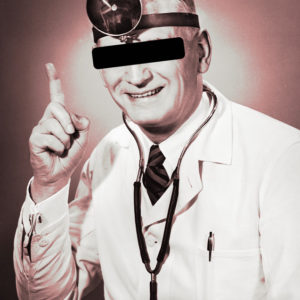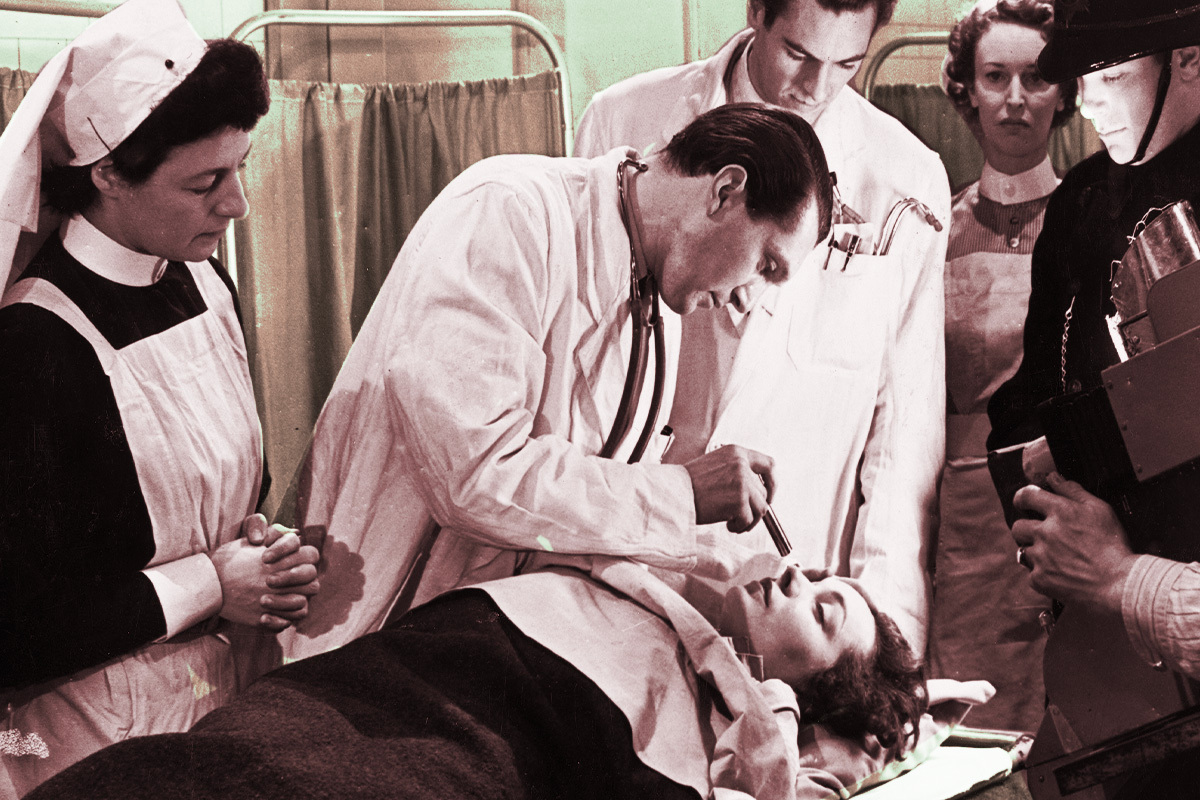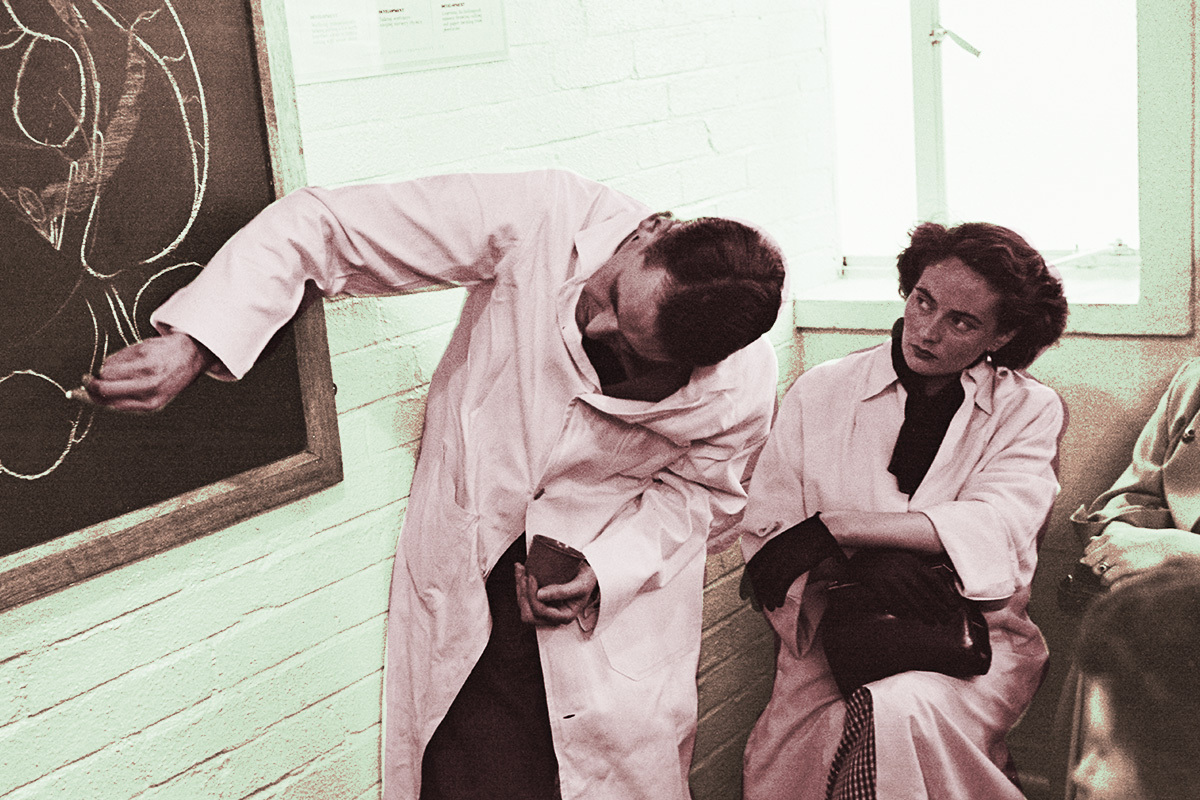“We won’t go back!” The cry echoed from protesters around the country after the Supreme Court overturned Roe v. Wade last month, ending the 50-year constitutional right to abortion.
Many have lamented the half-century rollback, remembering the bloody, often fatal, reality of back-alley and unsafe self-managed abortions. In 1965, eight years before Roe was handed down, a staggering 17 percent of all pregnancy and childbirth-related deaths resulted from illegal abortions (a few states allowed some legal abortions). Many abortions were not reported, so the actual number is likely higher.
But the Supreme Court has not only let red states flip the calendar pages back to pre-1973 America. In many ways, it’s worse than that.
Abortion has become a foundational pillar to all kinds of health care procedures. Ripping it out leaves them to tumble.
America now faces a reality that will be like returning to the early ‘70s, but with half a century of medical and technological advances that health care providers in certain states can no longer use. Since Roe, abortion care became drastically safer and more efficient, and the medical procedures involved in abortion have become indelibly embedded in the wider health care landscape. They’ve become a key aspect of all kinds of other health care, from miscarriage management to cancer treatment.
Now, in states from Texas to Ohio, we’re already seeing how abortion — or procedures that can be construed as abortion — are deeply entertwined with health care more broadly, and what it means for them to be taken away.
It’s easier, and convenient for the anti-abortion movement, to imagine abortion as a siloed-off procedure, under the auspices of Planned Parenthood and only relevant to young women seeking to end their unwanted pregnancies. But for decades, that hasn’t been the case.
After Roe, Abortion Becomes Safe
After the Supreme Court legalized abortion nationwide, researchers and physicians could finally learn how to get better at it.

“If the procedure is illegal, you can’t do clinical studies and you can’t develop new procedures because you’re doing it secretly,” Johanna Schoen, a professor of history at Rutgers University who has written extensively on abortion in the 20th century, told TPM. “Most people providing abortions were not clinicians and not able to do it in a medical setting.”
“After Roe, clinicians made it not only the safest out-patient procedure in the country, but also much safer than pregnancy and delivering a baby,” she added. “All of that has to do both with the improvement of abortion procedures and development of new ones.”
In addition to the procedure improvements, after Roe, physicians started receiving more training in how to perform abortions and manage potential complications. Mortality rates associated with abortion started to plummet. And the number of women hospitalized for abortion-related complications dropped between 1970 and 1977, with a steep dip after 1973. By 1995, fewer than .3 percent of abortion patients were hospitalized with complications from the procedure.
Abortion Is Now Woven Throughout Today’s Medical Landscape
While abortion care developed apace, other related medical technologies improved too. By the late 1970s, ultrasounds were being used widely in American hospitals, helping to advance detection of fetal abnormalities.
As the technology continued to improve over the next few decades, physicians became better able to identify abnormality markers. Under Roe, in states that hadn’t impinged on the abortion right with gestational bans (many diagnoses occur in the second trimester, though advances are pushing some earlier), women could opt for an abortion once abnormalities were detected rather than carrying the pregnancy to term.
Now, after Dobbs, experts are certain that women in states with draconian abortion bans will have to go through labor and give birth to babies that cannot survive.
The development of ultrasound technology has also enabled physicians to more accurately diagnose unruptured ectopic pregnancies in a way that was not possible pre-Roe. In these pregnancies, the fertilized egg implants outside of the uterus where it cannot survive but can pose a deadly threat to the woman if it’s allowed to grow.
The improvement in mortality rates associated with ectopic pregnancies followed: a more than 70 percent decrease in deaths-to-cases from 1970 to 1978.

Already, stories are emerging about the demise of Roe throwing ectopic pregnancy care into chaos. Doctors report feeling unsure about whether abortion bans — which are often written using broad political messaging language rather than medical — include ending ectopic pregnancies, which are not viable. Various lawmakers and anti-abortion activists have proven themselves to be particularly unlearned on the subject, some suggesting that terminating ectopic pregnancies is not medically necessary, while others have offered up a supposed solution — just moving the ectopic pregnancy inside of the uterus — technology for which does not currently exist.
Another medical success story already under threat is in-vitro fertilization, or IVF. The first IVF baby was born in 1978; since then, initial single-digit success rates have blossomed to nearly 50 percent for cases where the woman is under 35 years old. One to two percent of births in the United States annually result from IVF.
Fertility clinics have already been flooded with calls by people panicked about what abortion bans mean for their procedures. During IVF, clinicians usually implant one or two embryos in the uterus and store the rest for potential future use. It’s unclear whether bans would stop people from discarding the unneeded embryos, perhaps forcing them to pay to keep them frozen forever. Genetic testing of the embryos could become illegal. And if some embryos don’t survive the implantation process — or are nonviable and discarded — clinics could potentially be liable.
Some states are already contemplating granting personhood to the embryos, which could put IVF clinics out of business and leave the people who depend on them without options.
Far-Reaching Consequences
Even cancer treatment, a seemingly far cry from reproductive care, depends on abortion to afford its patients the right to treat their illnesses without worrying about the oftentimes toxic effect those treatments have on fetuses.
Cancer occurs in about one in every 1,000 pregnancies annually, leaving the women with few options even while Roe’s protections were the law of the land. Many treatments can cause miscarriages or birth defects in the developing fetuses, especially at the beginning of the pregnancy. The CEO of the American Cancer Society said that radiation therapy is never given to pregnant patients at all.
Ending their pregnancies, for these patients, can become a matter of literal life and death — the only way for women to receive the full gamut of treatment to cure their cancer. Now, in some states, women may have to choose: lifesaving treatment that will harm the developing fetus, or leaving their cancer untreated.

Some pharmacists are already restricting patients’ access to methotrexate, a therapy for certain kinds of cancer that can induce abortions. Methotrexate is also used in treating ectopic pregnancies and, since the 1980s, soothing chronic inflammation and pain, making it a mainstay in treating diseases like lupus, rheumatoid arthritis and psoriasis. The Arthritis Foundation has stood up a hotline amid reports of patients struggling to obtain the drug.
Two other pills — mifepristone and misoprostol, the collective “abortion pill” approved by the Food and Drug administration for combined used through 49 days of gestation in 2000, and for longer now — are already being acutely targeted by anti-abortion lawmakers. There’s a long history of animosity towards mifepristone in particular, with the FDA baselessly categorizing it as dangerous for years.
Those medications are indispensable in treating miscarriages, which at least one in four American women will have by age 45. Even before the Dobbs ruling, women have had to rely on abortion clinics for miscarriage treatment, often because of arbitrary limitations on who can distribute mifepristone. That problem has been compounded since the ruling by sparking confusion among some hospitals about whether other aspects of miscarriage care will be misconstrued by authorities as an elective abortion.
“Management of miscarriages and ectopic pregnancies are things that were not really possible when abortion was illegal,” Schoen said. “Women in the middle of miscarriages and ectopic pregnancies were up shit’s creek — and people died as a result of that.”
Abortion is a medical success story. Bringing the procedure out of the shadows allowed clinicians to make it safe and humane, and to weave it into other medical treatments. Procedures that are related to, or can be construed as abortion, are now integral parts of an astoundingly wide range of medical care. All of it is under threat.
The Supreme Court is not sending large swaths of the country back to the relative ignorance of pre-Roe America. It’s sending us back in time armed with prodigious knowledge and then-undreamed-of technology that lessen women’s suffering, and uncomplicate and alleviate illnesses where pregnancy is not an option — but forbidding health care workers to use that knowledge.
Women will suffer and they will die, even while doctors have 50 years of medical advancements at their backs. We’re not just going back. It’s worse.




Yeah: the reasoning behind the anti-abortion argument that every life is precious and is therefore wanted by someone, somewhere, just flies in the face as well of the biology of fertility. It relies on buying into the belief that every fertilized egg, without exception, will result in a viable, full-term pregnancy. No one knows for sure what the percentage is, but estimates are that around 50% of fertilized eggs either pass through the uterus without implanting or are spontaneously aborted, often without the person’s knowing it has happened. And then there are ALL the things that can go awry during pregnancy, either with the fetus or with the person carrying it.
Anti-abortion people don’t merely infringe on the rights of people to make medical decisions on their own, their position is in direct denial of biological fact.
Great article that displays all the ways the christo fascists want to control women.
If nothing else, let’s hope the Supreme Court has turned the country blue.
The question I have is how much of the anti abortion movement is about abortion and how much of it is about controlling women and returning them to second class people. That is the whole premise of the anti abortion movement is that women are like children who cannot be trusted to make decisions about their own bodies.
While a man, as a son, brother, husband, father and grandfather to women, I find this deeply offensive.
This well-written piece describes the brutal fallacy behind the “culture of life” that abortion opponents wield as their cudgel. To be a woman of childbearing years, a person relies on the medical advances that the medical procedure provides. For these women, even women who oppose abortion rights, they now face a culture in which their individual state from governor to legislature view them as potential criminals. The deeper tragedy is that this “culture of life” encourages medical outcomes where the patient’s death is more likely.